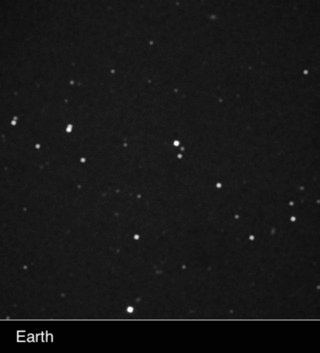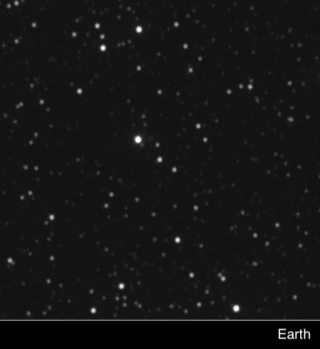Nasa's New Horizons spacecraft snaps photos of an 'alien sky'
Nasa's New Horizons spacecraft snaps photos of an 'alien sky' more than 4.3 billion miles from Earth
NASA's New Horizons spacecraft, which yielded the first close-up photos of Pluto, has managed to snap photos of an "alien sky" more than 4.3 billion miles from Earth.
The craft took images of nearby stars Proxima Centauri and Wolf 359, which appear to be in vastly different positions from the vantage point we see them on Earth, something known as the “parallax effect.” The space agency notes this is the same effect that people can easily replicate by placing one finger at arm's length and watching it move when you close one eye or the other.
"It's fair to say that New Horizons is looking at an alien sky, unlike what we see from Earth," said New Horizons principal investigator Alan Stern in a statement.

This two-frame animation of Wolf 359 blinks back and forth between New Horizons and Earth images of each star, clearly illustrating the different view of the sky New Horizons has from its deep-space perch. (Credit: NASA)
NASA’S NEW HORIZONS MISSION SHEDS NEW LIGHT ON HOW PLANETS FORM
"That has allowed us to do something that had never been accomplished before — to see the nearest stars visibly displaced on the sky from the positions we see them on Earth," Stern added.
Proxima Centauri and Wolf 359 are 4.2 and 7.795 light-years away from Earth, respectively. A light-year, which measures distance in space, is approximately 6 trillion miles.

This two-frame animation of Proxima Centauri blinks back and forth between New Horizons and Earth images of each star, clearly illustrating the different view of the sky New Horizons has from its deep-space perch. (Credit: NASA)
The parallax effect is used to measure the distance to stars, but since stars are always moving, it's impossible to see the motion over time. "No human eye can detect these shifts," Stern explained.
However, the change was spotted thanks to scientists comparing images from the ground to the images taken by the New Horizons craft, creating a 3-D view to see the stars "floating" in front of the background stars.
NASA RELEASES FIRST PLUTO FLYBY IMAGES
“The New Horizons experiment provides the largest parallax baseline ever made -- over 4 billion miles -- and is the first demonstration of an easily observable stellar parallax,” Tod Lauer, New Horizons science team member, added in the statement.
"The New Horizons spacecraft is truly a mission of firsts, and this demonstration of stellar parallax is no different" said Kenneth Hansen, New Horizons program scientist. "The New Horizons spacecraft continues to speed away from Earth toward interstellar space and is continuing to return exciting new data for planetary science."
Traveling at roughly 33,000 miles per hour, the $720 million New Horizons spacecraft, which launched in January 2006, will continue sending data transmission from its Arrokoth flyby until the latter part of summer 2020. It will eventually reach interstellar space, like the Voyager probes before it.
Previous discoveries include the object Arrokoth, previously known as Ultima Thule. In May 2019, New Horizons discovered water and organic molecules on Arrokoth, which is deep within the so-called Kuiper Belt, or Twilight Zone, well beyond the orbit of Neptune.
The Johns Hopkins Applied Physics Laboratory in Laurel, Md., designed and built New Horizons and is managing the mission for NASA’s Science Mission Directorate. The Southwest Research Institute is leading the New Horizons science team and payload operations.
CLICK HERE TO GET THE FOX NEWS APP
Fox News' James Rogers contributed to this story.





















